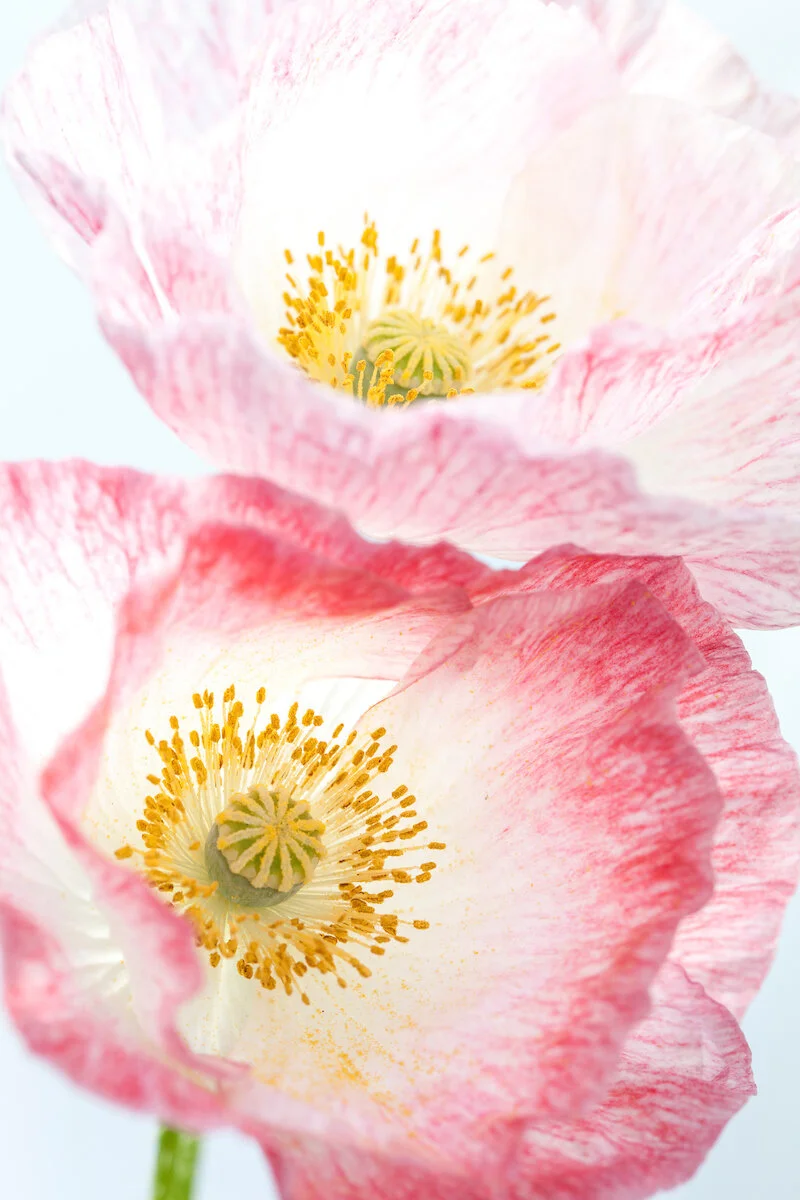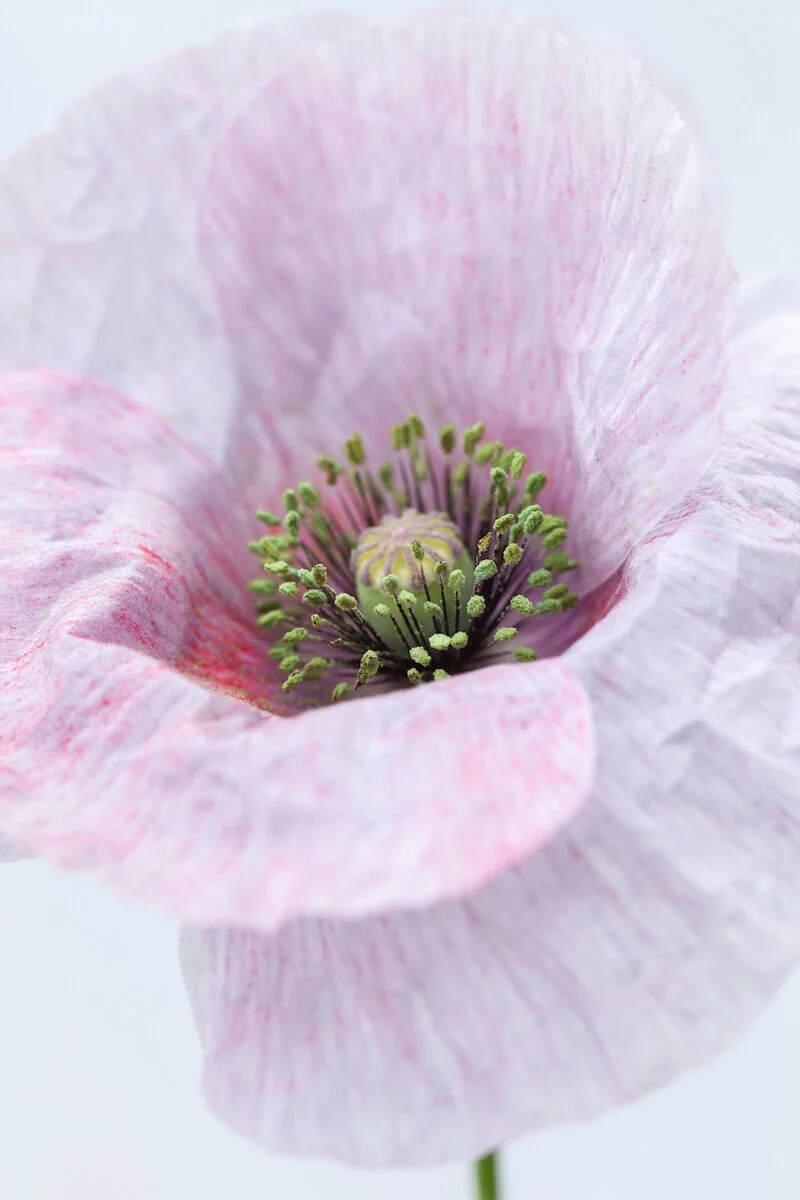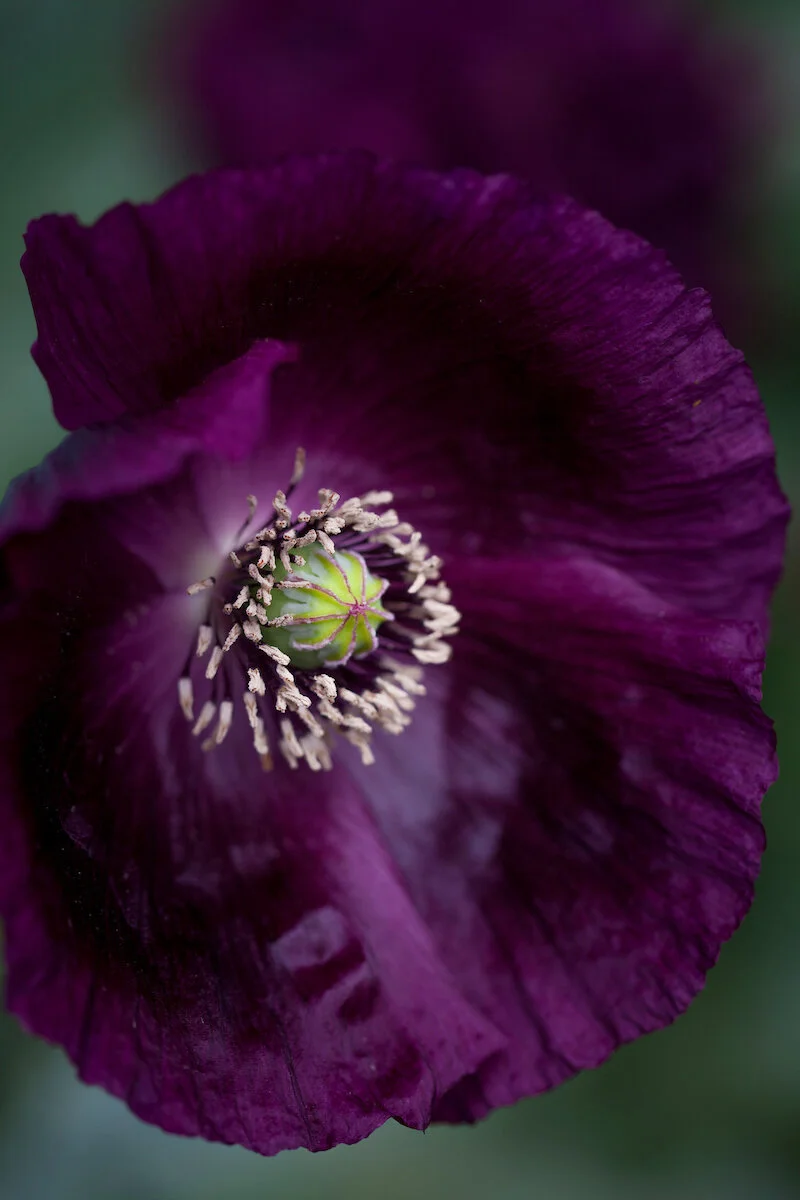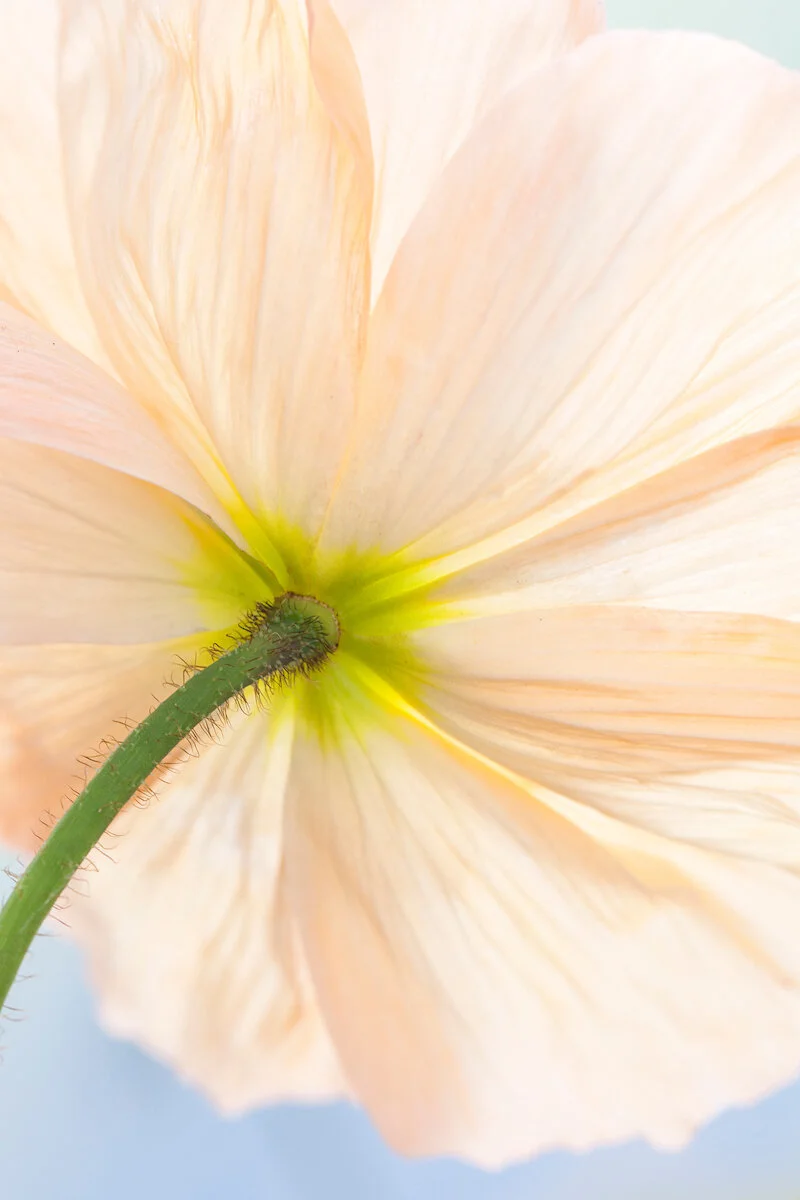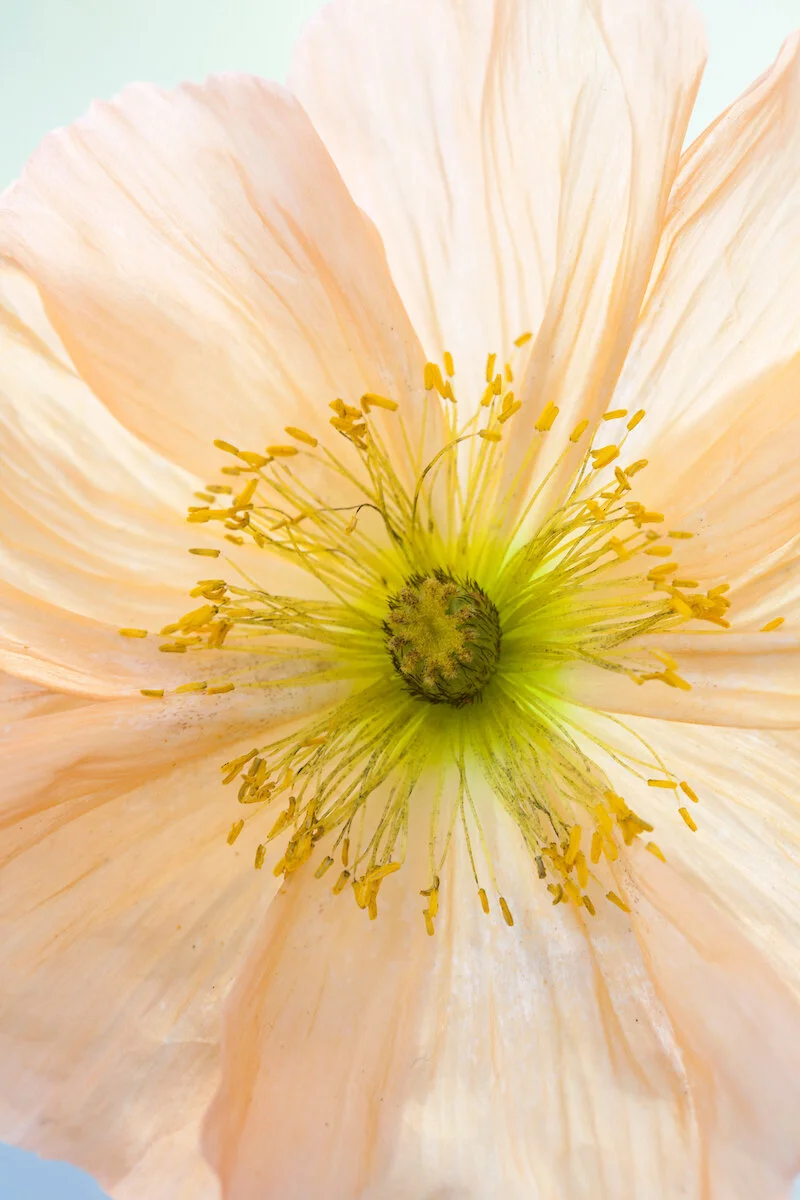Poppy
Photos by Sabina Rüber
Papaver rhoeas ‘Shirley Poppy’
P. rhoeas ‘Angels Choir’
P. rhoeas ‘Mother of Pearl’
P. somniferum ‘Candy Floss’
With their crushed silk flowers, poppies are one of the joys of summer. Their flowers may be fleeting, lasting only a week or so, but their ephemeral nature is so worth it for the jewel-like beauty they bring to the garden. In my cottage garden I like to grow different types of poppies including different coloured forms of the native field poppy (Papaver rhoeas), opium poppies (P. somniferum) and Icelandic poppies (P. nudicaule). I let them seed around and never quite know what to expect each year. Papaver rhoeas is easy to grow from seed and related forms include the Shirley poppies, which developed from an accidental seedling discovered by the Reverend Wilks, vicar of Shirley in Surrey in 1880. The flower he found had a white edge to the petal, and from that he started breeding other, softer-coloured poppies in shades of pink, orange and white. Since then other P. rhoeas selections have been developed, including ‘Mother of Pearl’ and ‘Angels’ Choir’. P. rhoeas 'Amazing Grey' is a recent seed strain that has been available in the US for a year or two - and is now available in the UK from Chiltern Seeds. Its flowers, with both single and double flowers, come in the most beautiful shades of silvery mauve-grey, dusky pink and slate, and I'm really excited about growing it this year.
P. somniferum ‘Laurens Grape’
P. rhoeas ‘Amazing Grey’
P. somniferum ‘Black Peony’
P. somniferum ‘Black Swan’
The opium poppy, Papaver somniferum, is taller and more substantial than P. rhoeas, with large showy single and double flowers in a wide range of colours from deepest velvety purple and lipstick pink to pale, grey-mauves and creamy whites. The seedpods are beautiful too. I love the peony types including the dark, sultry ‘Black Peony’, raspberry and white ‘Flemish Antique’, or a mix of different colours, ‘Peony Flowered Mixed’. If you have a dark hedge as a backdrop, as I do, choose lighter colours as the darker ones won’t stand out. The other group of poppies to try from seed are the biennial Icelandic poppies, P. nudicaule, which are better for cutting than the other annual poppies. Seed mixes of the Icelandic poppies come in subtle pastels (‘Meadow Pastels’) or brighter reds and oranges (‘Champagne Bubbles’).
P. nudicaule ‘Meadow Pastels’
Any of the annual poppies resent any hint of root disturbance, so they should be sown direct where you want the plants to flower, in an open, sunny spot in well-drained soil. Sow thinly into a finely raked soil in mid spring or early autumn, and keep well watered. Thin out the seedlings when they have emerged, remembering that the plants will eventually grow quite large. Once these plants have established, they will self seed and reappear year after year. For the biennial poppies, sow in late spring or early summer, to flower the following year. Unlike other poppies, they can be transplanted, so they can either be sown direct or in seed trays, to be planted out in late summer or early autumn.
Back to The Flower Garden main page. To buy a copy of The Flower Garden book click here.
